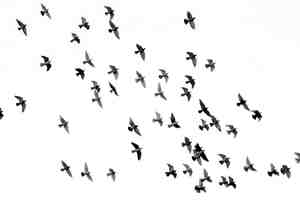

The Music of Silence: A Conversation with Corinna da Fonseca-Wollheim
Meet the Participants

As a contributing critic for the New York Times Corinna da Fonseca-Wollheim won honors for her fresh writing and for her ability to demystify classical music with empathy and humor. In print and in person, she is passionate about breaking down preconceptions and unlocking the wisdom and beauty of music.
Since creating Beginner’s Ear in 2019, Corinna has led live music meditations for a diverse range of listeners in places including a yoga studio, a high school, a federal detention center, a sunken garden and a dance studio. Each time, participants report experiencing deep feelings of stillness and ease.
Corinna uses meditation and sound to help people become better at listening – not just to music, but to themselves and each other.
Born to German parents in Brussels, Corinna obtained a B.A. in music and psychology from Royal Holloway College (University of London), an M.A. in Renaissance Theory and Culture and a doctorate from Cambridge University. She wrote her Ph.D thesis on the 17th-century Jewish Venetian poet Sara Copio Sullam. In February 2020 she completed the Mindfulness Teacher Training Program through MNDFL in New York City.
Corinna lives in Westchester with her husband, three children, and a goldendoodle named Lucky.

Franziska Lee (she/they) is a rising senior studying English & Comparative Literature and Ethnicity & Race Studies at Columbia University. During the school year, she serves as a staff editor on 4 x 4 Literary Magazine and the Columbia Journal of Literary Criticism. She was previously the summer 2023 Artistic & Literary Intern at PlayCo.
Corinna da Fonseca-Wollheim, whose writing is featured in the physical program for 9 Kinds of Silence (also available to read here), recently sat down with PlayCo’s summer 2023 Artistic & Literary intern Franziska Lee to chat about how musical silence factors in her work as a journalist, musician, and meditation teacher. The following conversation has been edited for clarity.
Corinna da Fonseca-Wollheim is the founder and artistic director of Beginner’s Ear, where she facilitates live music meditations. From 2012 to 2021, she worked as a contributing music critic for the New York Times. Right now, she’s feeling bereft—the swallows in her yard have left for the season, and she can hear their absence. But she’s also very busy—currently, she’s working on a profile of clarinetist Anthony McGill for Musical America, a research proposal for a study on audience receptivity, and her own memoir, which will be about listening and music.
Before I noticed my computer wasn’t picking up sound (a tenth kind of silence—the hollow, fruitless silence of a malfunctioning microphone?) Fonseca-Wollheim told me about the origin of Beginner’s Ear: In 2018, she attended a concert held by Princeton University Concerts that incorporated half an hour of meditation. The live music did what seven years of haphazard silent meditation with apps had never accomplished; she said she felt “the barrier between me and not-me temporarily dissolved.” Meditation came more easefully anchored in music; simultaneously, the music was much more intense as the focal point of the meditation. Her practice is inspired by that experience. She creates “a silence that is fertile, and redolent, and rich, so the music can flourish in it.” She’s tweaked some things, though—for example, in her sessions the musicians participate in the meditation along with the audience; they are part of the collective of listeners, just as the audience is part of the collective of creators. The audience is not just a passive receptacle for music—they create the experience of a live performance, changing it. The beauty of live performance is, in her terms, a “synchronicity between strangers.”
What does deep listening entail? The term, Fonseca-Wollheim pointed out, is a little redundant—the difference between hearing and listening might be characterized as depth. Listening entails awareness, focus, and intention, honing in on sound or speech or music. We hear many things; listening is the mind filtering, the way eyelids do for sight.
(At this point, I figured out the recording.)
Franziska Lee: In your article "How the Silence Makes the Music", you say that silence makes the listener aware that they have this expectation of sound. And I remember reading that people were really upset with John Cage's work—there can be a resistance to silence, to being asked to be aware of your own expectations, your responsibility in listening. Do you find that's the case with your practice? That there's a resistance to silence or to listening?
Corinna da Fonseca-Wollheim: People who come to a Beginner’s Ear session kind of know what they’re getting themselves in for, so it's maybe self-selective. The one big exception is when I lead some of these sessions in a federal detention center in Brooklyn. When you're working with a population that has so much trauma, and such an experience of lack of safety, even just asking them to close their eyes is really a lot. So I always kind of cue it to give people the option to maybe just try and focus their eyes. And there was a little more restlessness in the room, but I wouldn't call it resistance, rather a sort of palpable nervousness, you know, that informs the silence too. But people usually respond really warmly to this opportunity to hear more.
FL: Do you have a favorite among the musical silences that you list in your article? Or is there a particular one that you're most interested in?
CFW: I couldn't say if I have a favorite, but as a player (I play the violin, and I have an amateur string quartet) I really love the comical silences which you get in Haydn, sometimes in Mozart and in Beethoven, where it's that “made you wait” kind of wink. You know you’re coming up to the cadence, or whatever punch line has been set up, because there's been repetition, you've grown familiar with how the tune goes, and then the composer just withholds it for a moment. It's almost like you trip over an extra step, and then you have to laugh at yourself because you fell for it. As a player, those are a lot of fun, because you just feel yourself collectively stumbling.
I also love the Arvo Pärt sort of mystical silences. There's a flutist named Claire Chase who does incredible work commissioning new pieces for solo flute, and she works a lot with silence, especially being a single flute just walking alone. There's a piece that she recorded by a composer called Marcos Baltar called “Pessoa.” She plays the bass flute, which sounds sort of otherworldly. The sound itself—the phrases taper off, and there's silence in between them, but it just seems to pull you backwards in the collective consciousness, like it has a pre-hypnotic effect. It's very, very beautiful.
FL: That’s really lovely! One of my questions was about contemporary music—because your article is a brief survey of the western classical tradition. Do you encounter silence used in similar ways in different genres of music?
CFW: I think I mentioned in that article that in Japanese culture, there's a term, Ma, which is the space in between notes. That space is alive, and it's expressive, and the performance is to learn to interact with it. So that's a whole body of wisdom of its own there.
In pop and rock and jazz, too, people play with rests expressively all the time. Let's take something in pop—you know, the beat is usually so audible and so regular, that if you take it away it creates an extreme gap, right? A couple of examples that come to mind: Macy Gray’s “I Try.” Right at the beginning of the song, she has two lines or something, and then she says the words, “When will they stop?” And everything stops. It's just for about a beat. But you've already been pulled into the sound world, that has drums, and guitars, and her voice, and you take it all away. And you just fall into that void in a way that creates heightened attention, like it jolts you. And of course it fits with the lyrics.
Or, another one I was thinking of… REM’s “Everybody Hurts.” It’s a beautiful ballad, and it's six/eight; kind of lulling. Six/eight is sort of a cradle rhythm, right? It's soothing and comforting. But if you listen to it, periodically, they take one beat away at the end, and it creates this craving for the music to come back, because you've been lulled, and you suddenly realize what it would be to have it taken away.
Every musician plays with it. The great guitarists like B.B. King have such a freedom playing before or after the beat that it defines your sense of time, all the time. And you have to do that with silence.
FL: I think it’s remarkable that silence can make you aware of the mechanism that you're in—in poetry, for example, an unexpected gap heightens your awareness of language differently than prose.
I was wondering about how you, as a writer, move back and forth between mediums. You’re always translating the experience of listening to music into writing. What was learning to do that like for you? Does it come naturally? Is there a sense in which you've had to train to be able to do that?
CFW: I've been doing that since I was really young. I would play music to friends of mine who weren't into classical music, and just talk them through it. I think I have a tendency to anthropomorphize sounds—I see, like, little creatures doing stuff. Which I've sort of had to tamp down when I was, you know, writing for the New York Times, but talking about music comes actually quite easily to me and I love doing it.
But I'm also so aware that it is completely personal. On one hand, your reaction is going to be colored by your state of mind, your history with a particular place and song, maybe your memory of where you first heard it, or anything like it. And yet there are certain chords, certain chord sequences, certain moments, in music of any genre, where the whole room has the same reaction. You can just feel that sense of sudden awe, or a sense of sadness, or the pathos of something just hitting everybody at the same time. It's not random, and it's not just whatever you hear in it.Just as we are able to recognize language, it is to a certain degree, colored by culture and cultural conditioning, but the innate ability to read and decode music, I think, is pretty universal.
FL: I think that ability you have—that kind of anthropomorphization—is so effective in getting across meaning, because when I read your articles I can really understand what you're describing, despite lacking that kind of technical vocabulary.
CFW: Oh, that's lovely to hear. That makes me very happy. Yeah, I think if you reduce things to pure motion and energy—if you had to describe texture or color; what are the forces? Is it an individual versus a collective, and how do they interact? Already you're reading human intentions into pure sounds, because they represent or mirror these things that we know from life. If you have a sense of motion, what happens to that momentum? Does it peter out? Does it slow down reverently or tenderly? Or is it being suffocated? You would probably be able to tell me, if you heard a performance, that it would be one thing and not the other.
FL: I'm thinking about a moment in the play where one of the characters is describing the silence as it is happening, and I feel there’s a similar quality—she's communicating how she's experiencing the silence. And then it's the task of both the actors to give a tone to their silence, in the same way that music communicates emotion.
CFW: There is something in a gap in conversation, or in a rest in music that, if several people listened to it, would feel a moment where a point has passed where it makes sense. Then you enter the realm of desolation or confusion, like everything has stopped. John Cage’s first audience was really angry because they thought they were being made fun of. For a few moments, silence makes sense. It’s almost like a little drawbridge, or a hook, that you’re throwing over to the other side of a canyon, right? If the canyon is too wide, the whole thing just thuds down, and it's no longer connecting things. But where that point is might be different for some people. Those things are different around the world, yet everywhere you go, those gaps have a role to play.
Related Media
Related Productions

Written by
Franziska Lee
